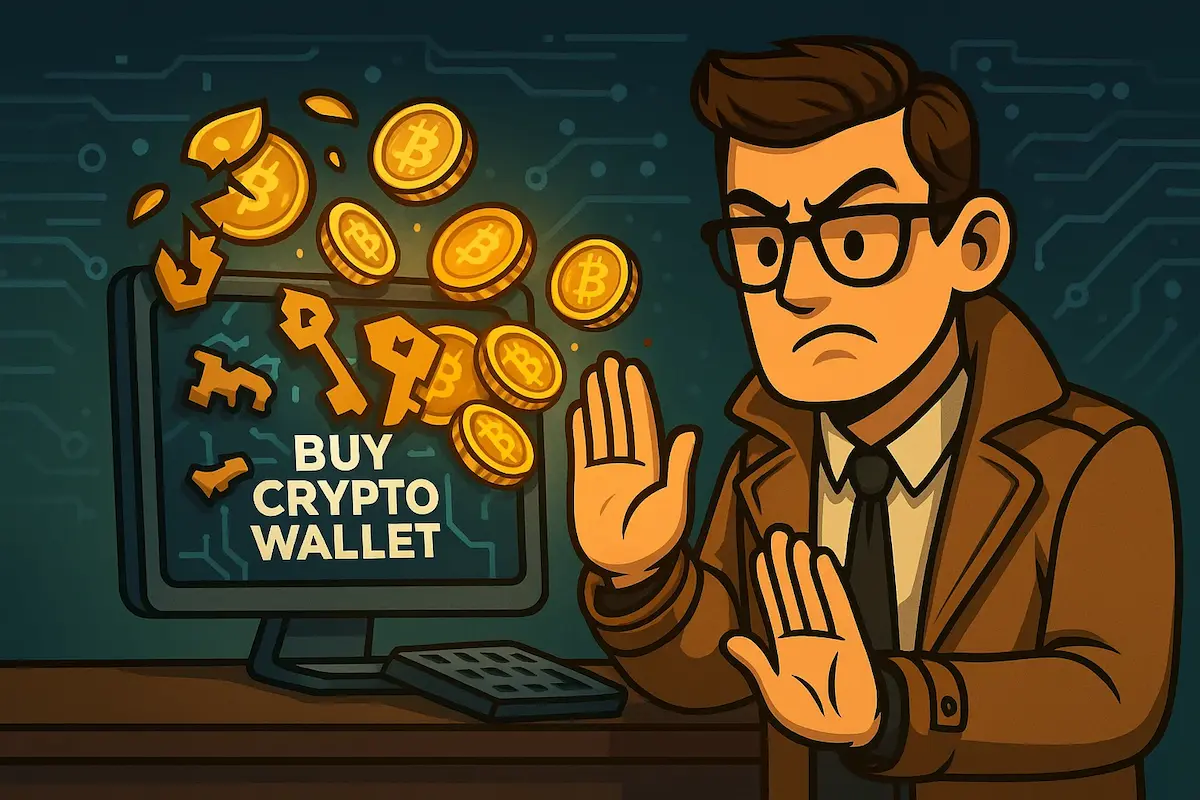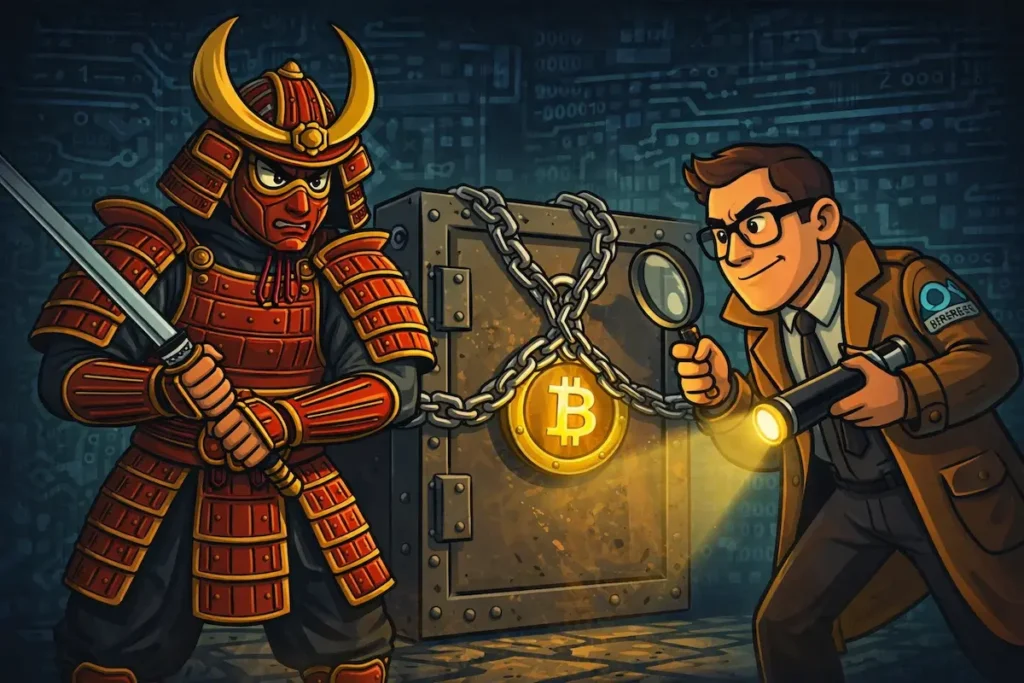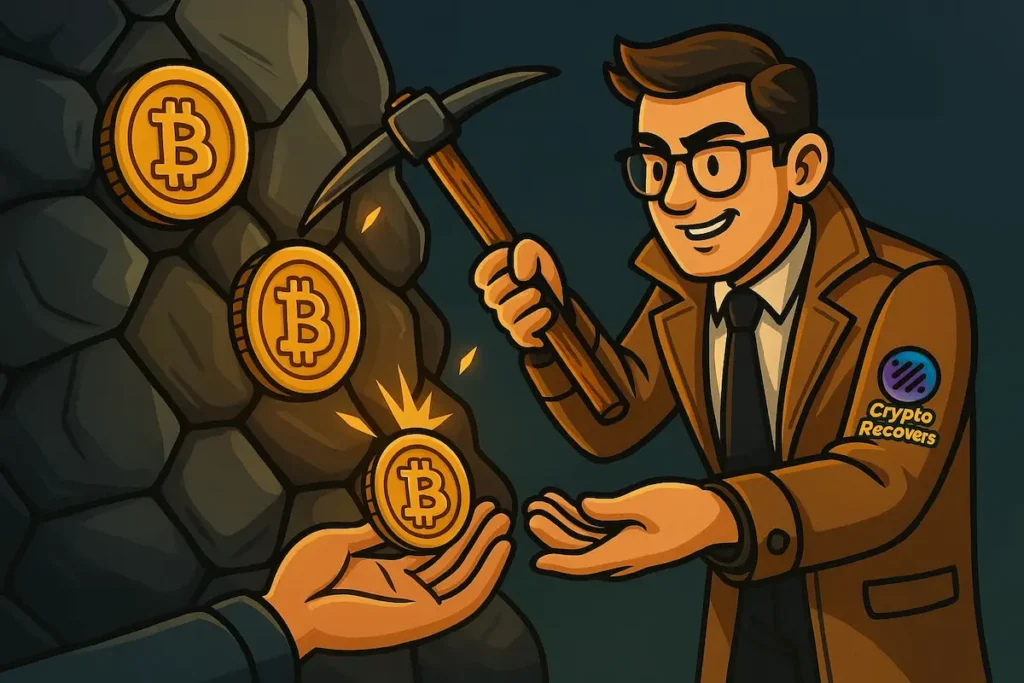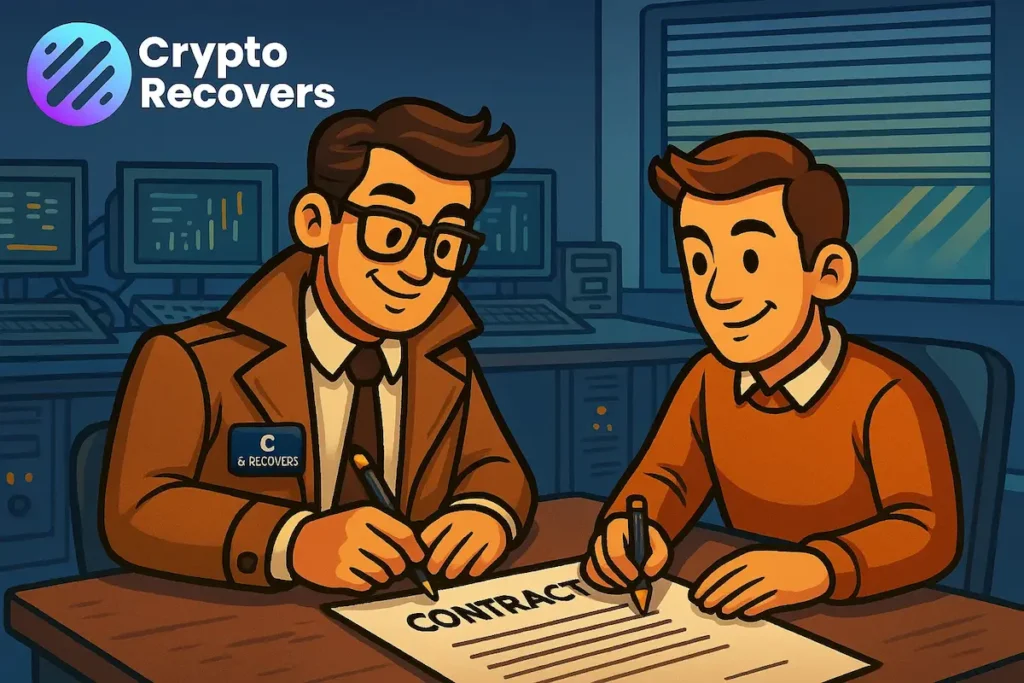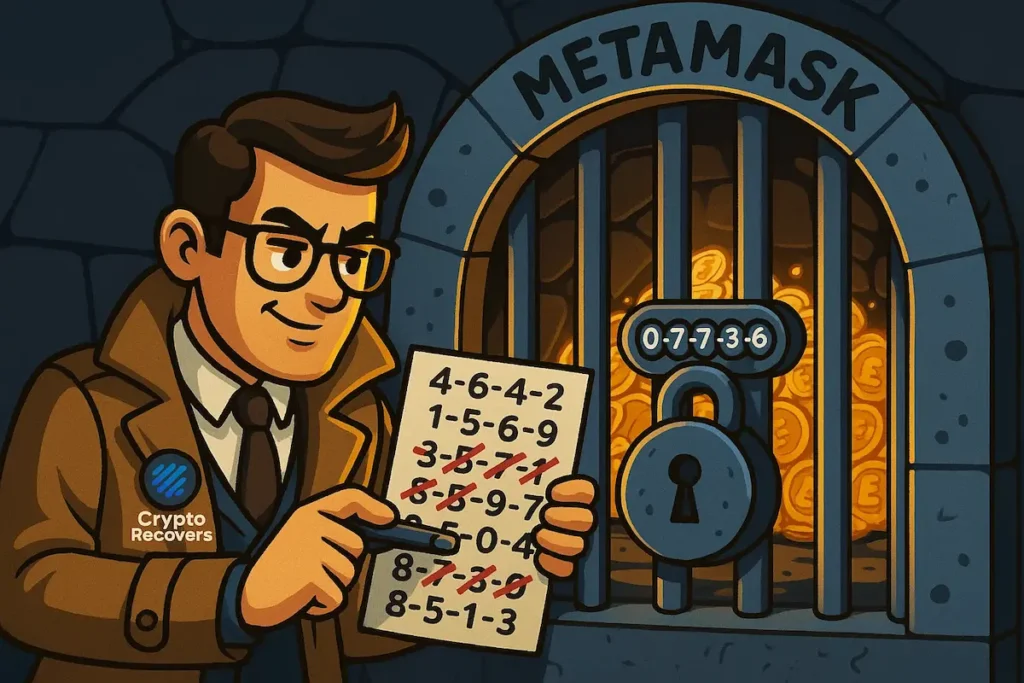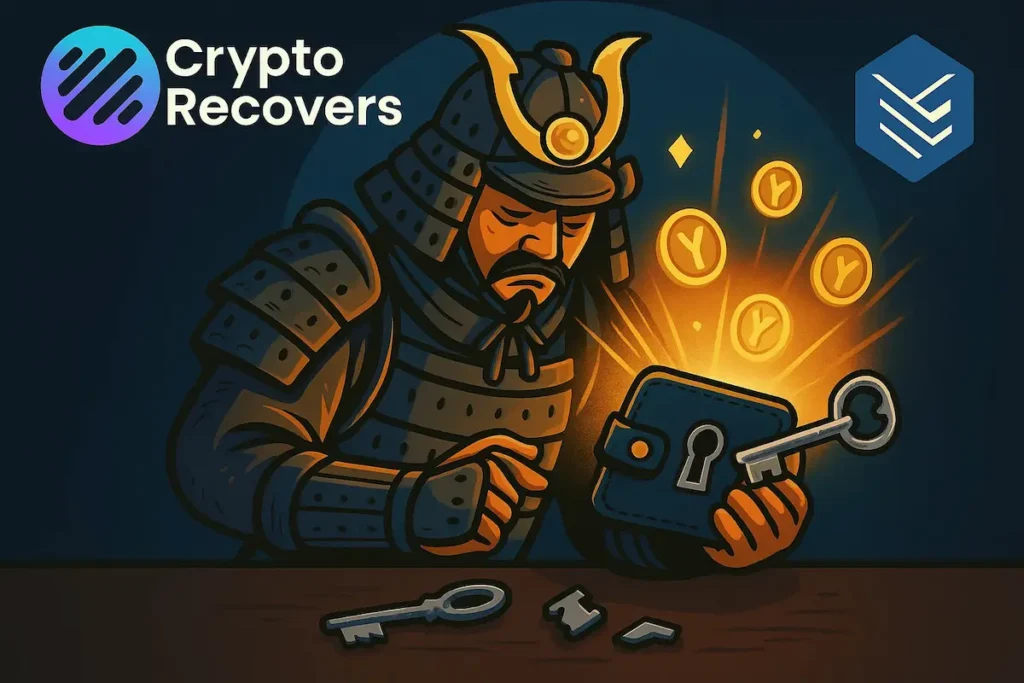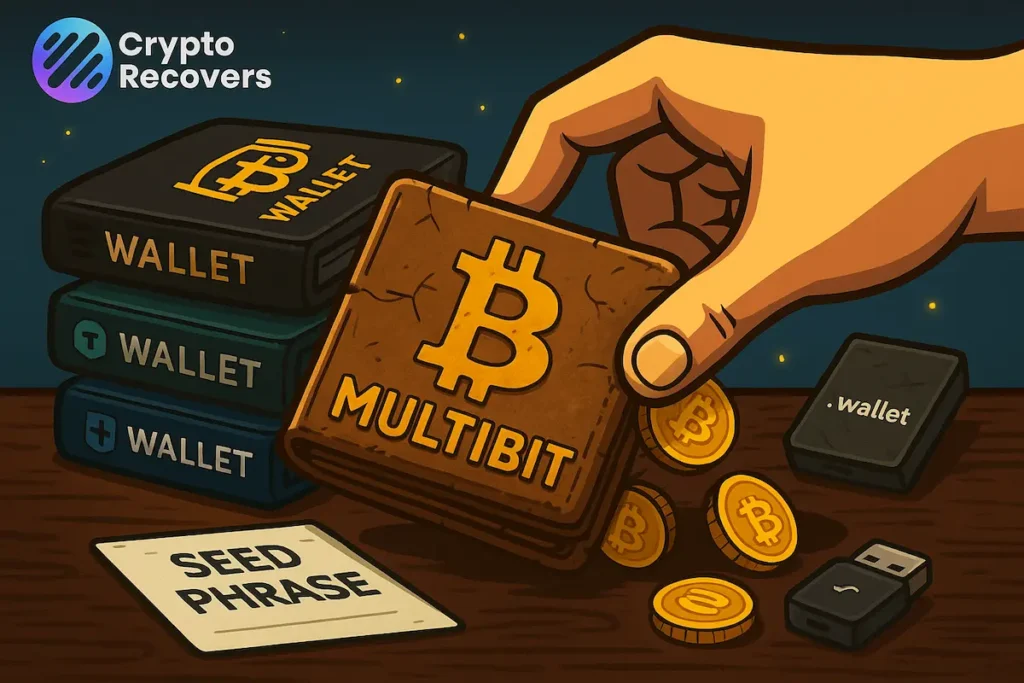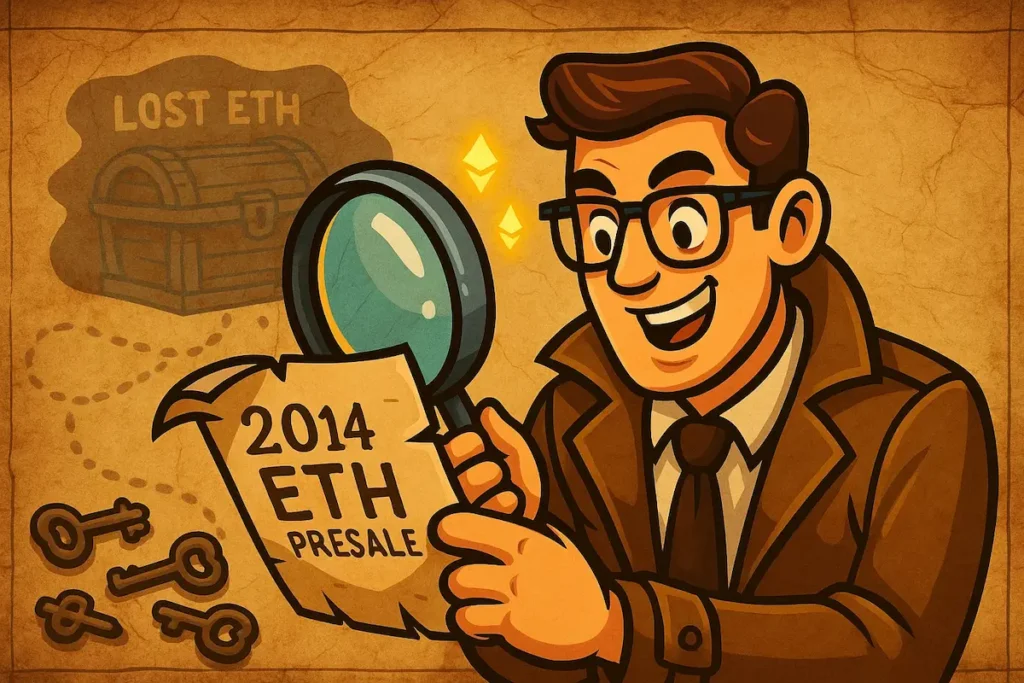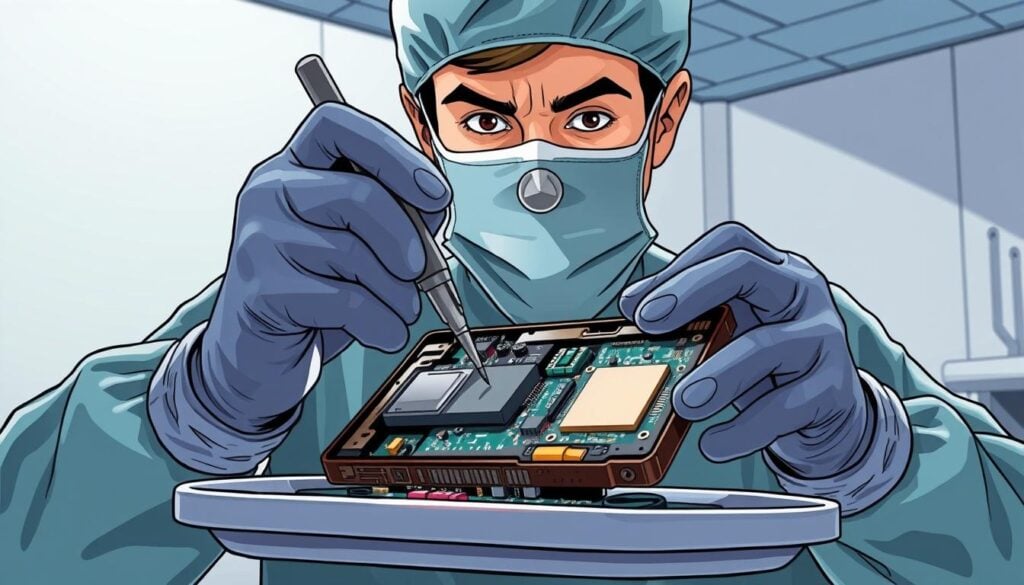Have you seen offers for pre-loaded crypto wallets for sale? Every week, we receive messages with a story that sounds all too familiar: “I have a crypto wallet with 100 BTC, but I forgot the password.”
Right away, we’re on alert. Our first step is to check the public wallet address—and in most cases, it becomes clear: the wallet.dat file was purchased online. Sadly, that usually means it’s unrecoverable.
Many of these people were tricked. Lured in by the dream of getting rich quick, they didn’t realize someone might have had dishonest intentions from the start.
Even after we explain that recovery isn’t possible, some still hold on to hope. They try to persuade us—offering bigger fees, or even trying to make us feel guilty for not helping. But this is exactly why we’ve written this article: to explain why buying a wallet.dat file online is a losing strategy—and to break down the technical reasons behind it.
Big Promises, False Expectations
Usually, the victims of this subtle scam find the wallets themselves on certain websites. They’re not very tech-savvy and often can’t tell whether the wallet can actually be recovered.
“There’s a whole business built on the naivety of people who often have tendencies toward gambling or other forms of instant gratification.” — Robbert Bink
When they visit these sites, they’re greeted with flashing numbers showing Bitcoin being converted into USD in real time. The values go up and down with the market, and it looks incredibly convincing. If someone isn’t familiar with how crypto wallets really work, it’s easy to get mesmerized and fall for it.
The fixed price for such a wallet usually ranges from a few hundred to several thousand dollars, depending on the wallet size.
For example, a wallet claiming to hold 180 BTC—worth around $20,557,434.60 USD—might be listed for sale for just $525.
But the truth is, the chances of recovery are close to zero.
Where’s the Catch?
Most of these websites share everything they can to make the wallet look real—lists of possible passwords, wallet .dat files, and private addresses. But in many cases, those private addresses don’t even match the public wallet users are told they’re buying and the passwords are impossible.
The users feel excited, and it’s hard to reason with them or explain logically that they’re walking straight into a trap.
Why Crypto Recovery Services Can’t Help to Recover a Bought Wallet.dat File
Some people come to us hoping we can “crack” these wallets and get their funds back. Often, they share stories—like the wallet belonged to a deceased grandparent or that they created it long ago—because they’re afraid to admit they actually bought it online.
Even the most advanced crypto recovery tools can’t bypass missing private keys, wallets completely made up by scammers, or passwords that never existed in the first place. For example, technically recovering a wallet password without any possible hint list could take centuries and require enormous computing power, since the number of possible combinations is essentially infinite.
Here’s more on how long crypto recovery takes.
Simply put—there’s nothing to recover.
Trying to recover a fake wallet is like trying to open a safe that doesn’t even have a door. It’s nothing but a waste of time and money.
How Can You Check if a Wallet is Fake?
There are a few simple steps you can take to spot a fake crypto wallet before falling for the trap.
Start by checking the wallet address on a blockchain explorer like blockchain.com. If the address shows a real balance, don’t get excited just yet. That only means someone owns the wallet—it doesn’t mean you will.
Next, ask the seller for the private key. If they refuse or dodge the question, that’s your biggest red flag. Without the private key, you won’t be able to access the funds—ever.
You can also use wallet file checkers. There are tools available that let you open and scan old wallet files, like those from Electrum or MultiBit. If the file doesn’t contain a valid private key, it’s either fake or incomplete.
Lastly, do a quick online search. Many of these scams reuse the same wallet addresses or made-up stories. A simple Google search can often expose the scam in seconds.
Here is more on how to find legitimate crypto recovery.
Do Those Pre-Loaded Wallets Actually Exist?
The crypto wallets themselves often do exist on the blockchain — meaning the public wallet addresses are real and actually hold crypto. Scammers know how to show you the wallet’s balance because blockchain data is public. Anyone can look up any wallet address and see how much crypto it holds.
The scam is that you don’t get the private key aka a secret code that lets you control or spend the coins in that wallet.
Without the private key, you’re like someone who knows the address of a locked safe but doesn’t have the key to open it.
Sometimes, they might give you a fake wallet file or a corrupted one that pretends to have access, but it’s useless without the real private key.
The wallet that looks real but is basically a locked box without the key.
Where People Buy Unaccessible Pre-Loaded Crypto Wallets
People usually come across fake crypto wallets either because scammers contact them directly through social media apps like Telegram, WhatsApp, or Facebook, sending messages that offer “old wallets with lots of coins” for sale. Also they find ads and listings on shady websites, underground forums, or even marketplaces like Facebook Marketplace.
Sometimes scammers create fake professional websites, fake testimonials, and paid ads on Google or social media to make the scams look real and trustworthy. They use urgency, promises of big profits, and fake proof to lure people in.
So, whether contacted directly or finding these offers online, it’s important to be very careful and skeptical about any wallet “for sale” with large amounts of crypto.
Bought a Wallet with Crypto on it You Can’t Access? Here’s What to Do
Despite how hard it is to hear, it’s usually impossible to recover funds from these wallets. If you bought a fake, inaccessible wallet, stop sending money and don’t trust anyone promising to unlock it. Report the scam to relevant authorities and warn others to prevent them from falling for the same trick. Most importantly, learn how real crypto wallets work to avoid getting scammed again.

